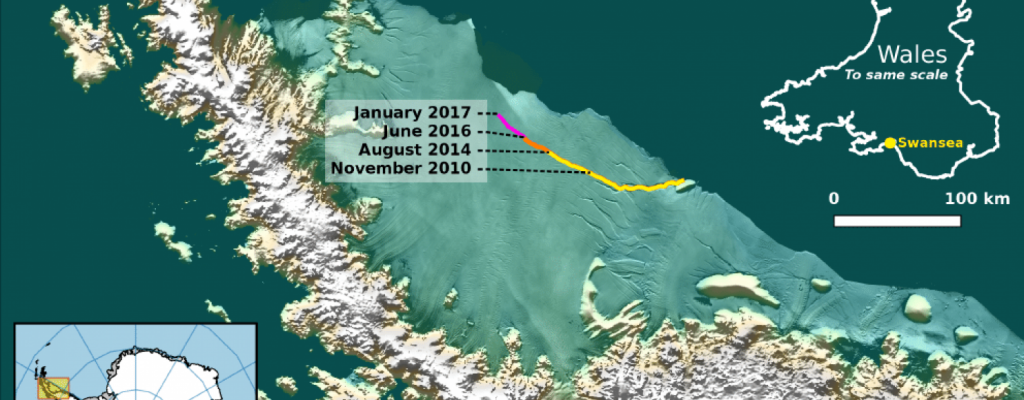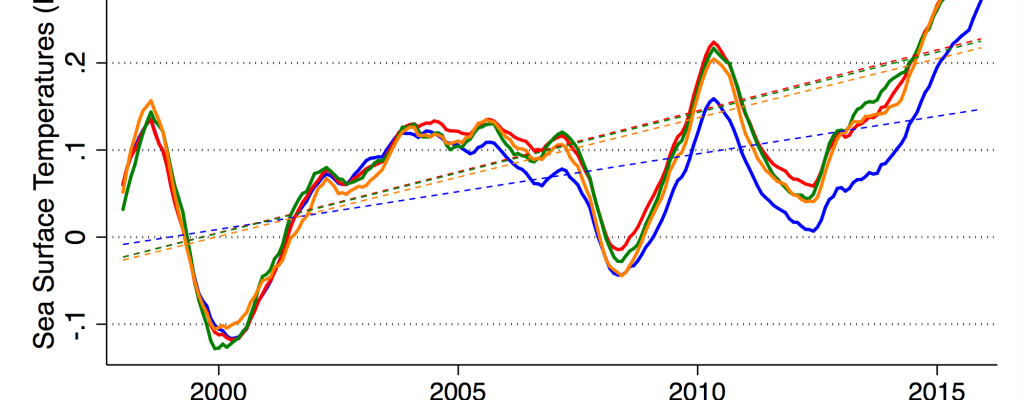Climate and Ag in the news
-

The State Climate Office of North Carolina has released a report on the snow storm that affected the Southeast this past weekend. While I saw only 0.2 inches at my house in Athens, GA, many other places saw more substantial amounts of snow and ice. You can read about the impacts on North Carolina at https://climate.ncsu.edu/climateblog?id=225&h=5666e5c1.…
Posted in: Climate and Ag in the news -

A few months back I posted an article on a large crack in one of the Antarctic ice shelves called Larsen C that appeared to be expanding and was in the process of breaking off a large iceberg the size of the state of Delaware. Today I noticed a couple of articles updating us on…
-

Southernfriedscience.com had an interesting blog post this week about talking to others about “climate change”. The author points out that even though you may know a lot about the science of how climate works and how things are changing, that is just not going to resonate with a lot of people. Instead, talk about fishing.…
Posted in: Climate and Ag in the news -

2016 is done but the stories about the year in climate are coming out thick and fast. Here are a few I saw that are particularly interesting. The Capital Weather Gang discusses global weather disasters here: https://www.washingtonpost.com/news/capital-weather-gang/wp/2017/01/03/extreme-weather-killed-thousands-and-cost-billions-across-the-globe-in-2016/?wpisrc=nl_rainbow&wpmm=1 Dan Satterfield of the American Geophysical Union posted about the astonishing warmth in the Arctic and Antarctic at https://blogs.agu.org/wildwildscience/2017/01/03/2016-ends-astonishing-warmth-gloomy-news-antarctica/. USA…
Posted in: Climate and Ag in the news -

Do you love luscious lobsters? If so, you might be interested in this NOAA story on how the location of lobster fishing is changing over time. This is due to changes in water temperature which affects the growth of the tasty crustaceans. You can see the animation of where the critters have been caught over…
-

Recent research in Science Advances by University of California-Berkeley has confirmed what NOAA scientists reported in 2015: there was no pause in global warming during the period when most media skeptics were talking about the end of the warming curve. The scientists looked at methods for correcting climate data to account for changes in instrumentation,…
-

The Packer reported this week that Florida strawberries are doing much better than a year ago, when extremely high temperatures hurt production levels. This year, while still warm, is closer to normal values, and the strawberries are producing much better. Market prices are still being hurt by competition from Mexico and California, however, so farmers…